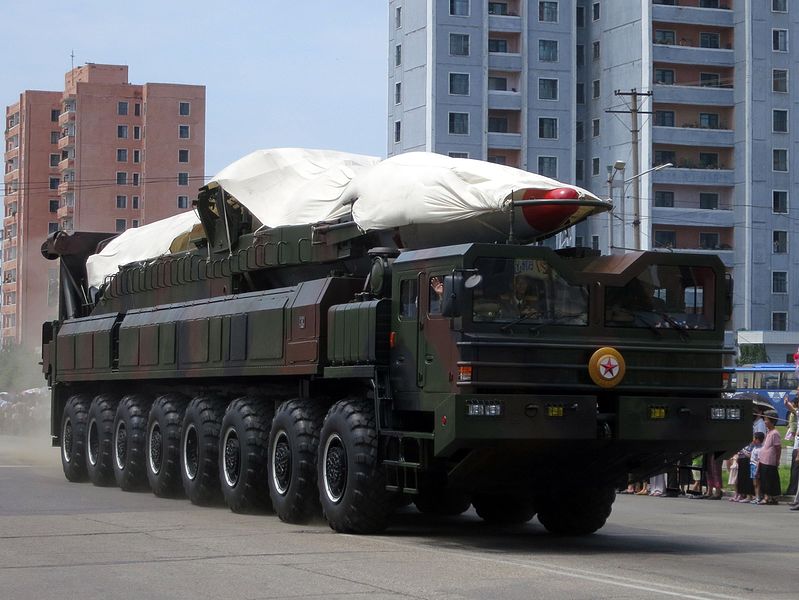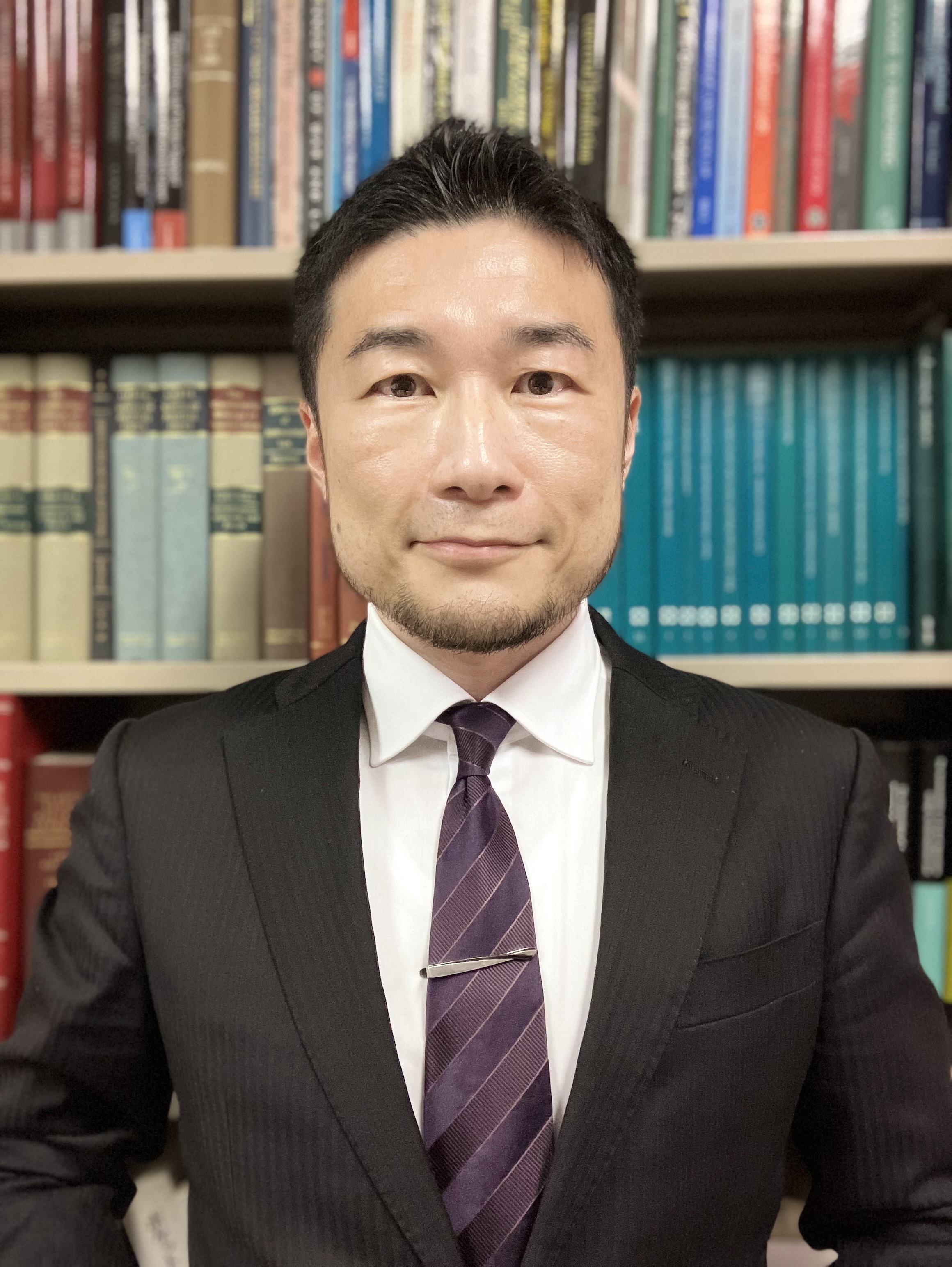The Dynamics of Japan’s “Armed Attack Initiation” Doctrine and Anticipatory Self-Defense
How has the debate over pre-emptive strike capabilities been legally framed in Japan? What are its implications for U.S. national security policy?

Published by The Lawfare Institute
in Cooperation With

Recent events have brought back into the spotlight the question of whether Japan should acquire weapons capable of striking missile launch sites in enemy territory. This controversy was sparked by a recently revived debate over introducing strike capabilities aimed at delivering deterrent effects vis-à-vis North Korea—a country acknowledged as posing “grave and imminent threats to Japan’s security,”—as well as potentially deterring China and Russia. This debate occurs against the backdrop of a series of recent negative impacts on the Japanese security environment: the unsuccessful U.S.-North Korea dialogue for denuclearization and the return to pre-2017 confrontation; China’s assertive and provocative actions around Taiwan and the Senkaku Islands in the East China Sea in conjunction with its aggressive maneuvers in the South China Sea; and the creeping threat of Russia’s hypersonic glide missiles spurred by the expiration last year of the U.S.-Russia Intermediate-Range Nuclear Forces Treaty (INF Treaty). Making matters worse, the Japanese government decided this past June to halt a plan to purchase a U.S. ballistic missile defense system (Aegis Ashore).
How has this pre-emption debate been legally framed in Japan? What are its implications for U.S. national security policy? In this post I offer an overview of Japan’s legal doctrine of self-defense and argue, first, that this Japanese doctrine may potentially shift toward a broader conception of anticipatory self-defense and, second, that whether and how Japan’s interpretation of self-defense evolves will depend on the shifting dynamics of the U.S.-Japan alliance.
Formulating the “Armed-Attack-Initiation” Doctrine
Under Article 51 of the U.N. Charter, Japan may exercise its right to self-defense only when an armed attack against the country occurs. This is also the standard espoused by the Japanese Constitution. However, the precise definition of the “occurrence” of armed attack—that is, exactly when an armed attack is considered to have occurred—has long been a source of debate in Japan. Then-Prime Minister Ichiro Hatoyama first raised the issue in 1956, two years after the establishment of Japan’s Self-Defense Force. He famously said: “I find it impossible to believe that the Constitution means we should just sit and wait for destruction in a case where an attack with a guided missile or similar weapon was launched against our national territory.” Hatoyama’s concern was later resolved to some degree by the adoption of a domestic legal framework that allowed the destruction of “falling objects” toward Japan such as unidentified ballistic missiles, or satellites, as long as the destruction would not violate the territorial sovereignty of other states (see here). Yet attack capabilities that would enable Japan to remove the source of the attack within the territory of adversaries before any actual damage is caused on the Japanese territory definitely demanded a separate legal doctrine justifying Japan’s interstate use of force in self-defense.
Under these circumstances, the Japanese government formulated a legal opinion on the timing of self-defense in 1970. In the government’s view, actual harm is not necessary for the occurrence of armed attack as the notion of occurrence covers the “initiation” of armed attack. However, the mere likelihood of armed attack does not fall within the category of “initiation” in the legal sense, and neither does preparation for armed attack. What is critical for determining whether initiation has occurred is “a high probability” of armed attack, namely, “substantial grounds for its probability” based on “a comprehensive assessment of international affairs, the demonstrated intent of the opponent state, and the means and patterns of attack.”
Delicate Distance Between the “Initiation” and the “Imminent Threat” of Armed Attack
In this doctrine, the initiation of armed attack must be distinguished from an imminent threat of armed attack, a notion of anticipatory self-defense that allegedly derives from the Caroline doctrine in the mid-19th century but that the Japanese government has consistently rejected as a matter of international law. In its long-standing interpretation of the U.N. Charter, “the mere likelihood or threat of armed attack does not authorize the exercise of the right to self-defense. In other words, neither preemptive strikes nor preventive acts of war are permissible.”
That said, the dividing line between these two approaches is not so clear-cut. This can be demonstrated by the fact that an almost identical hypothetical case of a North Korean missile strike has been cited to illustrate both doctrines. In 2003, Shigeru Ishiba, then the defense minister, presented one most-likely scenario for the initiation of armed attack. He stated that if North Korea announced that it would turn Tokyo into a sea of flames and started fueling or erecting its missiles, then Japan would be in a position to conclude that armed attack had been initiated against Japan. Fifteen years later, a remarkably similar scenario was invoked in turn by Scott Sagan and Allen Weiner in response to an article by John Bolton as an example of anticipatory self-defense. They wrote:
For example, if America had intelligence that North Korea had alerted military forces and was fueling long-range missiles on their launchpads or rolling out missile launcher vehicles, the United States could reasonably assume an attack was imminent and unavoidable and could legally launch a pre-emptive strike in what international lawyers call “anticipatory self-defense.”
The Japanese government has underlined that, by way of its report to the U.N. Security Council as required by the U.N. Charter, Japan “must persuasively explain to international society the point of time when an armed attack has been initiated.” But, as these scenarios show—and the government itself admits—the distance between the initiation and the imminent threat of armed attack is quite delicate and is still highly debated in international fora. Japan’s “armed-attack-initiation” doctrine has not yet been sufficiently developed to completely resolve the issue of the substantive distinction between the initiation and the imminent threat of armed attack. This is all the more pressing given the advancement of technologies of cyber and hypersonic strike capabilities that would render it much more difficult for a state to consider time and distance in its armed attack determination with granularity. In any event, whether Japan’s “armed-attack-initiation” doctrine will be recognized by the U.N. Security Council and other U.N. member states as properly reflective of Article 51 of the U.N. Charter remains to be seen.
Implications of the U.S.-Japan Alliance
How Japan’s “armed-attack-initiation” doctrine will evolve in the future is contingent on the fate of Japan’s alliance with the United States. In fact, not only has the doctrine remained underdeveloped, but it has also garnered little attention from the public and even most security professionals. This is primarily because, by virtue of the U.S.’s overwhelming offensive capabilities backed by the Caroline doctrine, Japan has been able to devote itself to a strictly defensive role in its defense. Seeking to “let sleeping dogs lie,” Japan has thus avoided facing squarely the issue of what exactly the initiation of armed attack means as distinct from the imminent threat of armed attack.
The alliance relationship between the United States and Japan is often compared to a “sword and shield.” Under the spirit of the pacifist Constitution underlying its defense-only policy, Japan has long refrained from possessing offensive and expeditionary capabilities, capable of reaching the territory of other states even for self-defense purposes. Yet such traditional balance of burden-sharing is now being undermined. One could argue that, as with Australia, Japan currently leans toward self-reliance in its national security while maintaining its alliance with the United States. This move led to a proposal approved in August by the country’s ruling Liberal Democratic Party for Japan to acquire “capabilities to halt ballistic missile attacks, etc. within the territory of adversaries.” But such capabilities should not be deemed limited to those needed to halt ballistic missile attacks. To take a prominent example, Japan has already set up a plan to build the capabilities of its Self-Defense Force to disrupt cyber operations by adversaries for its self-defense against their armed attack, which, in the government’s view, even a cyber-only attack could constitute. The government will reportedly make the first revision to its National Security Strategy this year based on the party proposal.
No doubt, a major shift in Japan’s alliance policy affects relevant legal parameters. It is not completely unrelated to Prime Minister Shinzo Abe’s recent repeated calls for revising the Constitution—which has never been amended in its 74-year history. The wider the security policy pendulum swings from defensive to offensive, the more likely it is that Japan will push itself to the limit of the “armed-attack-initiation” doctrine while remaining in accordance with the U.N. Charter and other rules of international law. But it is the alliance policy of the United States as well as that of Japan that ultimately will determine whether and how this Japanese doctrine is galvanized going forward.
Conclusion
Japan’s “armed-attack-initiation” doctrine is the critical legal framework necessary for balancing between the country’s two national security demands: to make its defense operations as responsive as possible to the needs of a changing security environment, on the one hand; and to ensure the prevention of its preemptive use of military force, on the other hand. As is shown by the delicate conceptual distance between the “initiation” and the “imminent threat” of armed attack, however, the doctrine remains underdeveloped.
Japan’s legal position on self-defense has remained unchanged so far. Yet it remains to be seen where that position goes from here—Japan’s legal posture toward self-defense is not static. Within the parameters of international law, Japan’s “armed-attack-initiation” doctrine is subject to changes in alliance dynamics. Amid the shifting balance of alliance burden-sharing between the United States and Japan, it is not too much to say that whether and how the doctrine evolves from here is inextricably linked to the future alliance policy of the United States toward Japan.
The opinions expressed here are solely those of the author and do not necessarily represent the position of the Japanese government or the Ministry of Defense of Japan. The English translations of any Japanese texts are the author’s own except where a link to an English translation is provided.





